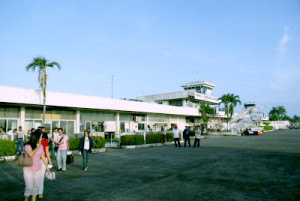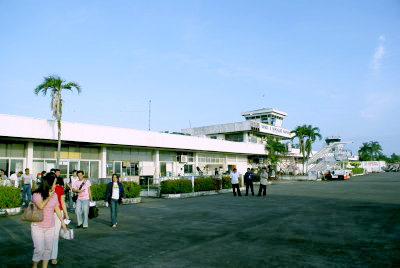
NON-COMMERCIAL fixed-wing flights have been banned indefinitely from the heavily damaged airport of Tacloban City in Leyte, central Philippines to give priority to relief operations.
The Civil Aviation Authority of the Philippines (CAAP) said general aviation is also restricted due to space constraints at the airport.
CAAP said all airports affected by super typhoon Haiyan (known locally as “Yolanda”) are running in full operation.
These are the airports in Guiuan, Samar, Bantayan and Roxas in Cebu, Kalibo and Caticlan in Aklan, Busuanga in Palawan, San Jose in Mindoro Occidental, Ormoc in Leyte, Tagbilaran in Bohol, Borongan, Biliran and Calbayog in Samar, Dumaguete in Negros Oriental, and Catbalogan in Western Samar.
CAAP deputy director general Captain John C. Andrews said all CAAP managers of the affected airports cleared the runways within 24 hours after Yolanda’s landfall, allowing these facilities to serve as the only means of transport to the devastated areas.
After 48 hours, all but Tacloban airport had become operational, complete with air-ground communications, the aviation regulator said.
On the third day, conditions at Tacloban airport had improved and the hub was able to accommodate turbo-propeller aircraft. Limited commercial operations using turbo-prop planes began operating on the Mactan-Tacloban-Mactan route.
On Nov. 14, Tacloban was ready to accommodate A-320 commercial flights, although their frequency is limited by ongoing relief operations by the USS George Washington.
Commercial flights using A320 on the Manila-Tacloban-Manila route and turbo-prop commercial flights on the Mactan-Tacloban-Mactan route had been able to carry 7, 500 passengers from Tacloban to either Manila or Mactan.
Incoming flights to Tacloban carried 4, 500 passengers, 50 tons of relief cargo for Tacloban during the same period.
Simultaneous military relief operations are likewise being done in Tacloban, the CAAP said.
Tacloban airspace and ramp control are being performed by CAAP air traffic controllers with the co-operation and assistance of US forces.
The cooperation was further enhanced by joint conference between the CAAP and US military operations personnel.
A320 flights on the Manila-Tacloban-Manila route will continue at a frequency of four a day, while nine turbo-prop flights on the Mactan-Tacloban-Mactan route will likewise go on.––Roumina M.Pablo
Photo from www.tourisminthephilippines.com





